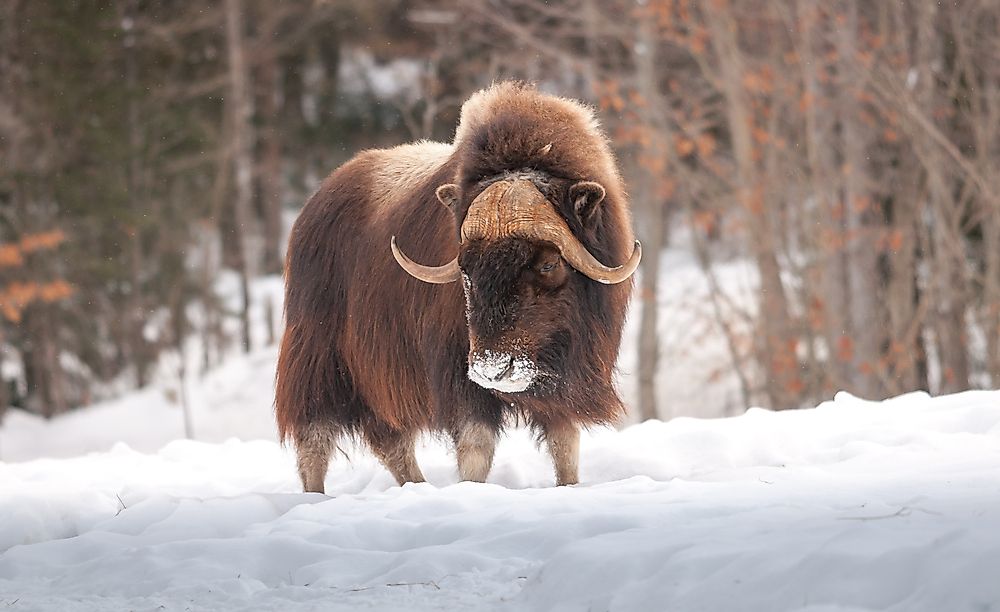Each year LitHub does a “If They Gave Oscars to Books” in which they rank books published in the last year in various categories. I decided I wanted to complete my own version using only the books I read in the last year. My categories are a little different than LitHub’s, but I had fun thinking about this. Here is what I came up with:
Actor in a Leading Role (Best Male Main Character): Detective Meyer Landsman in The Yiddish Policemen’s Union by Michael Chabon.
This book was so vivid, sharp, and entertaining – I enjoyed it even in an extremely sick and sleep-deprived state early last year. Meyer is a believable – and lovable, even when flawed – noir protagonist updated for the early 2000s.
Actor in a Supporting Role (Best Male Side Character): Rocky in Project Hail Mary by Andy Weir.
This wasn’t the best book I read last year, but Rocky was absolutely the best part of it. What I did love in the book, I loved because of Rocky.
Actress in a Leading Role (Best Female Main Character): Keiko Furukura in Convenience Store Woman by Sayaka Murata.
Keiko is not like other people, but Murata helps us see the world through her eyes. Without wanting to “diagnose” Keiko simply because she is different, I think this is a skillful portrayal of someone who is perhaps not “neurotypical.”
Actress in a Supporting Role (Best Female Side Character): Ma Yingzi in She Who Became the Sun by Shelley Parker-Chan.
Without discussing plot points, I felt Ma Yingzi was a good foil to Zhu Chongba. Both in that she was good-hearted, and also good at showing how corrupt Zhu would become.
Add a Category! – Best Non-Binary Character: Zhu Chongba in She Who Became the Sun by Shelley Parker-Chan.
Zhu Chongba was born a girl, but knows she has to take her brother’s destiny if she is going to survive, so she tries to hide her sex from everyone – in some ways even from herself – so she can truly focus on her rise to power. Her relationship with her sex is somewhat complicated which I found very sympathetic.
Runner up: Mosscap in A Psalm for the Wildbuilt by Becky Chambers. Don’t get me wrong, I love Dex. I think a lot of us saw ourselves in Dex. But at this moment, reflecting on the book, Mosscap gave me what I needed.
Animated Feature Film (Graphic Novel): Saga Volume 10 by Brian K. Vaughan and Fiona Staples (illustrator).
I didn’t read as many graphic novels or comics this year as I normally do, but I think Saga takes the cake. Not because this volume stands above the rest of Saga – it doesn’t – but because Saga stands so far above nearly everything else. Can I make it through a volume without crying? We have yet to find out.
Cinematography (Setting): A Master of Djinn by P. Djèlí Clark.
I had one or two complaints about this book, but the setting was never one of them. You might think a steampunk Egypt which recently wrested itself away from British rule and finds itself in the middle of a feminist movement while run amok with supernatural creatures seems a like a busy place for a sapphic detective story but… it’s perfect. The Dead Djinn Universe felt so real, and so wonderful, I wanted to fall into it and just breathe it all in. …And also eat at literally any restaurant mentioned.
Costume Design (Best Cover Art): She Who Became the Sun by Shelley Parker Chan, art by Jung Shang
I don’t know that much about visual arts, but I think this is an effective cover: the black, the gold, Zhu Chongba posting up against her destiny…
Runner up: The Yiddish Policemen’s Union by Michael Chabon, jacket design by Will Staehle from wikipedia “features an amalgam of styles (like the novel itself), drawing on classic pulp detective novel, Jewish imagery, and art from the Pacific Northwest and Alaska, especially that of the Tlingit and Haida peoples.”
Directing (Favorite Author): Anthony Ray Hinton with Lara Love Hardin and Bryan Stevenson for The Sun Does Shine: How I Found Life and Freedom on Death Row.
Anthony Ray Hinton spent 30 years on death row for a crime he did not commit. His memoir is beautiful and inspiring and in its pages we find an amazing human being. I wish I could shake Mr. Hinton’s hand.
Documentary Feature Film (Best Nonfiction Book): A Life on Our Planet: My Witness Statement and a Vision for the Future by David Attenborough
This book even feels like a David Attenborough documentary as you read it. I bought this one for my mom for Christmas two years ago, and then borrowed it from her when she was done. “The first half is depressing, but it gets better in the second half,” she told me. I found a bookmark placed at the transition from scary to hopeful.
Documentary Short Film (Best Essay Collection): Braiding Sweetgrass by Robin Wall Kimmerer.
What can I say about this book that can possibly do it justice? This is the best book I have read in years, and I hold it close to my heart, now. I initially thought of picking just one chapter from the book to call “best essay” but I couldn’t narrow it down, so I’m awarding it to the whole book, instead.
Film Editing (Editor of a Collection or Magazine): Jonathan Strahan for The Best Science Fiction and Fantasy of the Year.
I didn’t know how to read short fiction until I was compelled to read a bunch of it for my Hugo’s reading project last year. When it finally clicked, I re-discovered Volume Seven of Strahan’s yearly collections on a lower bookshelf in my house and realized that it was a treasure trove of wonderful stories. Strahan has a good eye for choosing the right stories for the collection.
International Feature Film (Book in Translation): Defying Hitler by Sebastian Haffner, Oliver Pretzel (translator)
This is Pretzel’s translation of his father’s unfinished memoir of “his life and the political events in Germany from 1914, when he was seven years old, until 1933” that preserves Haffner’s reflections and thoughts in the moment of extreme change. It is eye-opening, at times fuel for imagination. The writing is occasionally less-than-clear – possibly an artifact of translation. Yet, I think this is an extremely important book, and a highly compelling read.
Makeup and Hairstyling (Best Mystery/Thriller/or Horror Book): The Yiddish Policemen’s Union by Michael Chabon
Admittedly, this category really doesn’t hold that much competition, but this Hugo and Nebula joint winner is a highly worthy book.
Music (Best Book-Related Social Media): Milwaukee Public Library – bonus to their Stephen King homage
I have abolished most of my social media accounts, but I always support my local library. MPL’s videos are 🔥
Best Picture (Best “Literary” Fiction Book): If Beale Street Could Talk by James Baldwin
Lyrical, soul-touching, intense.
Runner up: Wuthering Heights by Emily Brontë – I have so many thoughts, y’all.
Production Design (Best Publisher): Small Beer Press
My first book from Small Beer Press was A Stranger in Olondria by Sofia Samatar, later I realized they have published the translations of Angélica Gorodischer’s books, and at WorldCon I picked up a copy of Sarah Pinsker’s collection of short stories. Seeing Small Beer Press’s name is now a recommendation for me.
Short Film (Animated) (Best Children’s Book): I Kissed the Baby by Mary Murphy.
This is a black and white book ideal for very little babies. I read it over and over with my daughter. I highly recommend heartily kissing the baby you are holding when you read the page out loud that says “ppfffwah!” 10/10.
Runner up: Hedgehog’s Big Adventure by Ross Williams and Gavin Scott. I have this so many times it is now memorized, which came in handy when I was trying to get my daughter to fall asleep on an overnight flight across the country.
Short Film (Live Action) (Best Short Story): The Tomato Thief by Ursula Vernon.
Ok, this is more of a “long” story, a kind-of sequel to Jackalope Wives, but I loved it intensely. Ursula Vernon rocketed up into a favored status for me after reading this. I am so happy I stumbled across it last spring.
Sound (Best Poetry): Beowulf: A New Translation by Maria Dahvana Headley (translator)
When I first heard a new translation of Beowulf was being published, I thought to myself “why? We already have Seamus Heaney’s version. What else do we need?” Then I heard that the debated first word (should it be “Hark!”, “Lo!”, or “Listen!”?) she translates as “Bro!”. I cackled out loud to myself and immediately bought three copies to share. This is a translation that is fun, smart, and really shows how important the role of translator is in interpreting a text.
Visual Effects (Best Sci-Fi/Fantasy Novel): The Past is Red by Catherynne M. Valente
I don’t want to repeat myself too much since I have already written about how deeply this book affected me and about meeting Cat Valente at WorldCon. I loved this book and I am grateful for it. This book was also a finalist for the inaugural The Ursula K. Le Guin Prize for Fiction.
Writing (Adapted Screenplay) (Best Book Adaptation): “The Sandman” Season 1 on Netflix
This is the correct way to do an adaptation. *Chef’s kiss* Perfection. I am hoping we get 1 or 2 shots of Dream’s eyes next season, though.
Writing (Original Screenplay) (Best Prose): Empress of Salt and Fortune by Nghi Vo.
Ok, this was another one I read while sick and sleep-deprived early last year, but I remember telling myself to try to stay awake because the words were beautiful and I wanted to savor them.
Runners Up: Eat Up! by Ruby Tandoh for the delectable descriptions of food; and “Where Oaken Hearts do Gather” by Sarah Pinsker for being so damn interesting.















